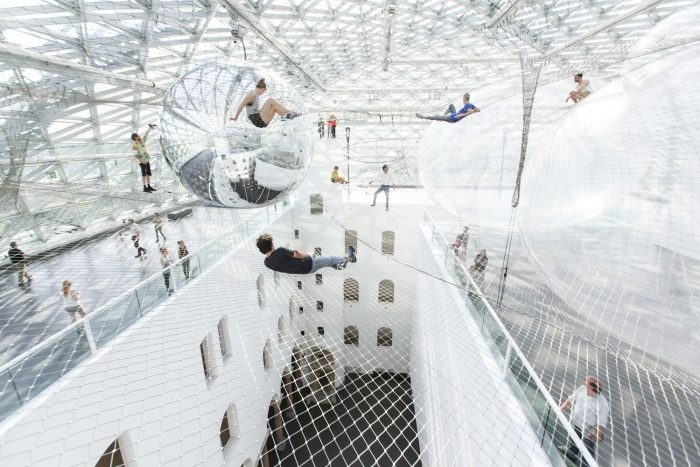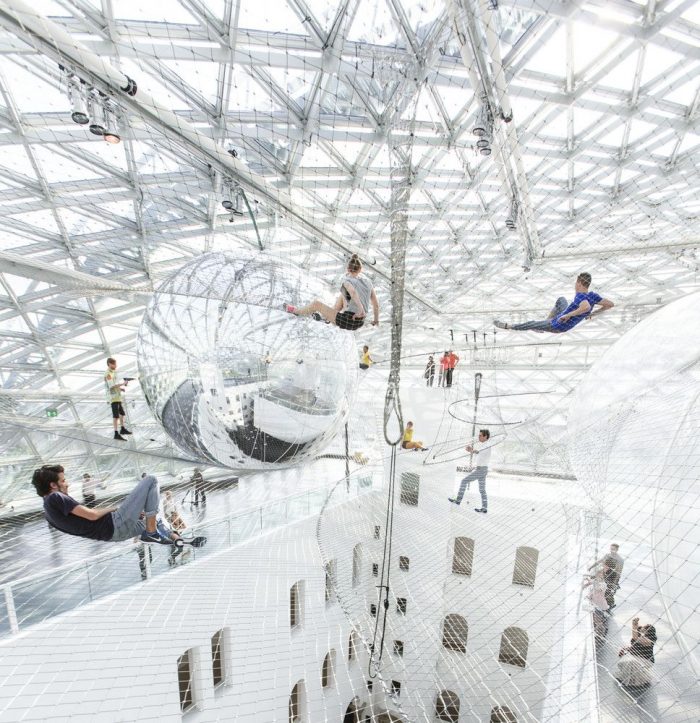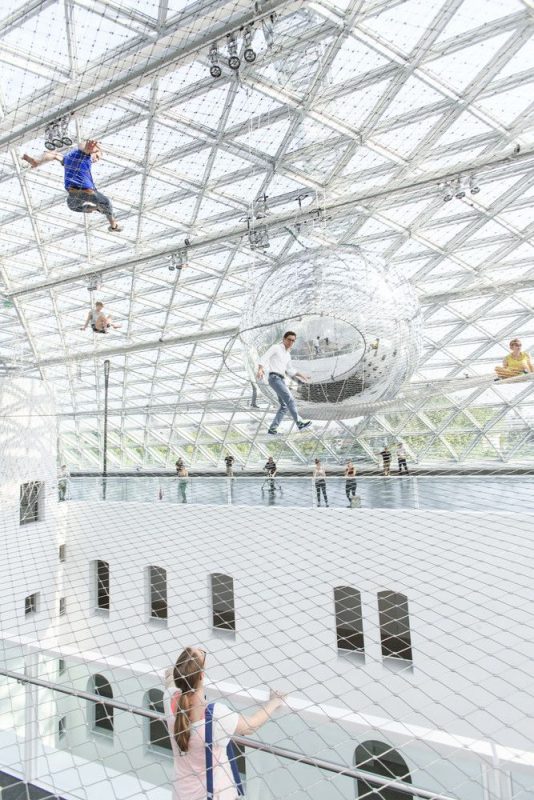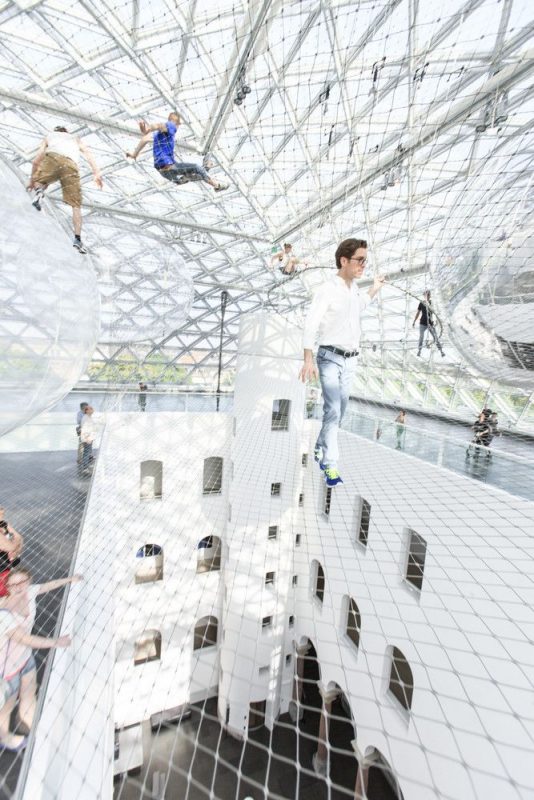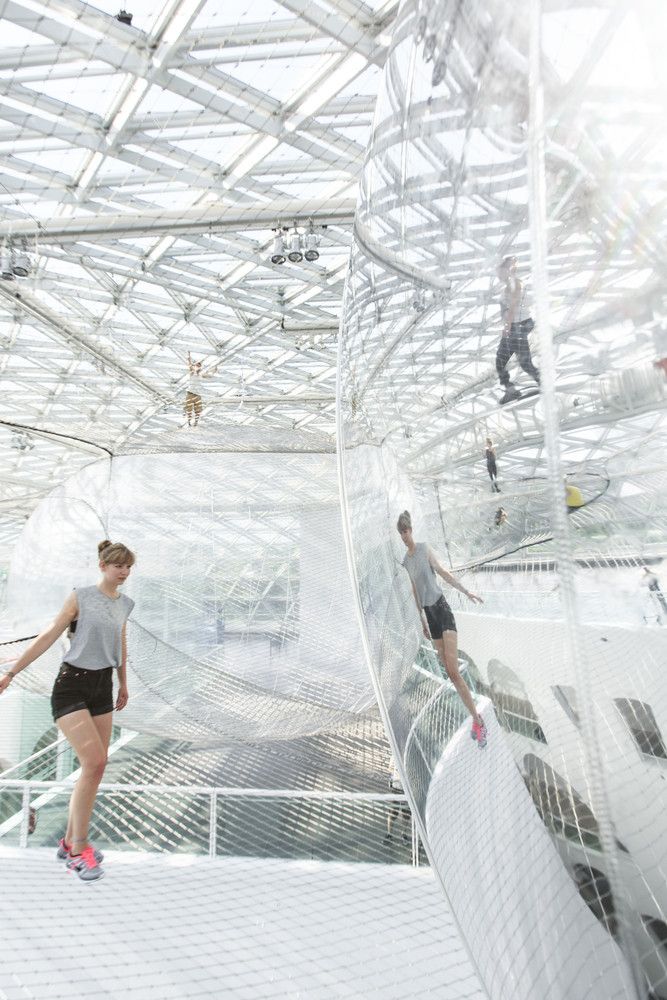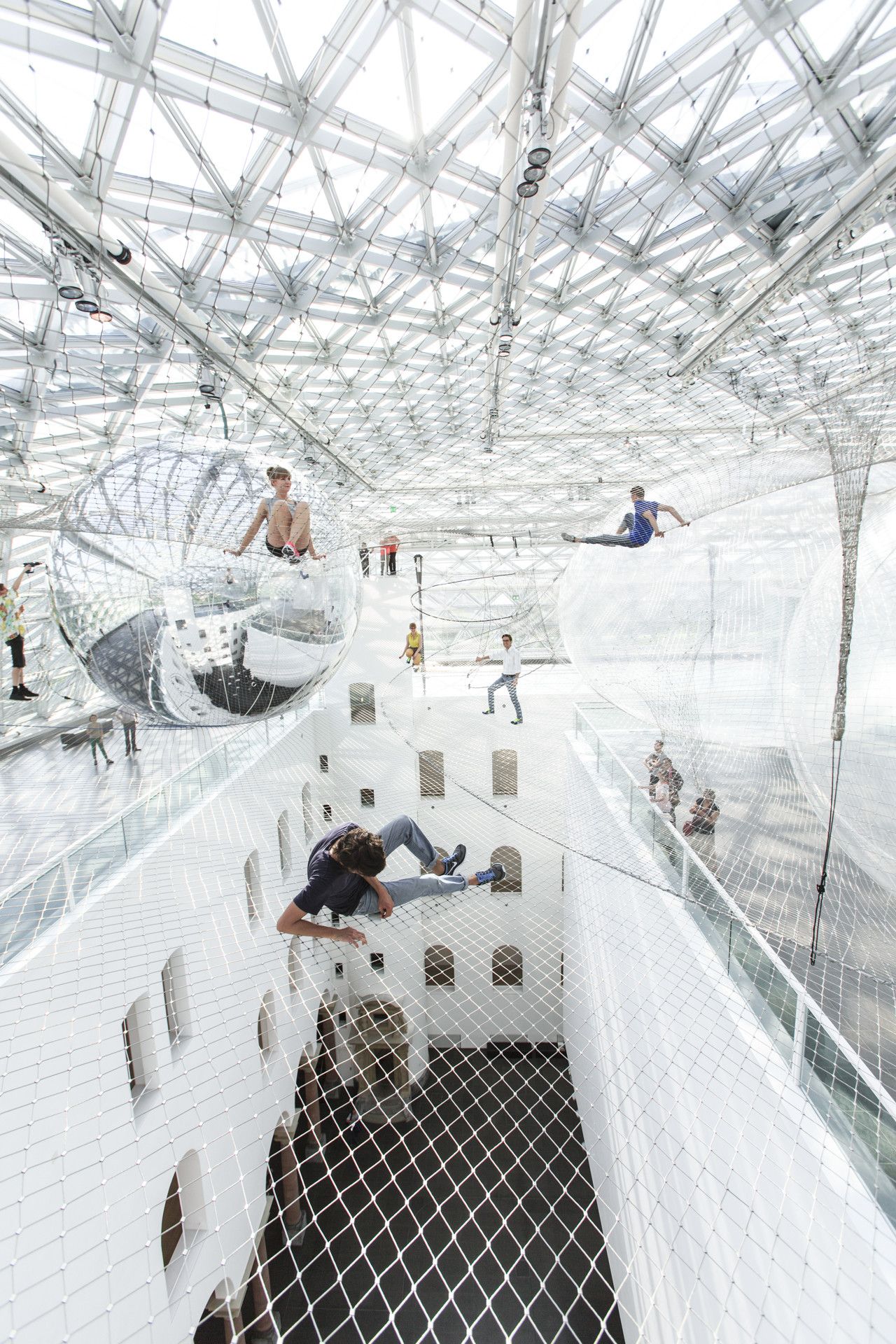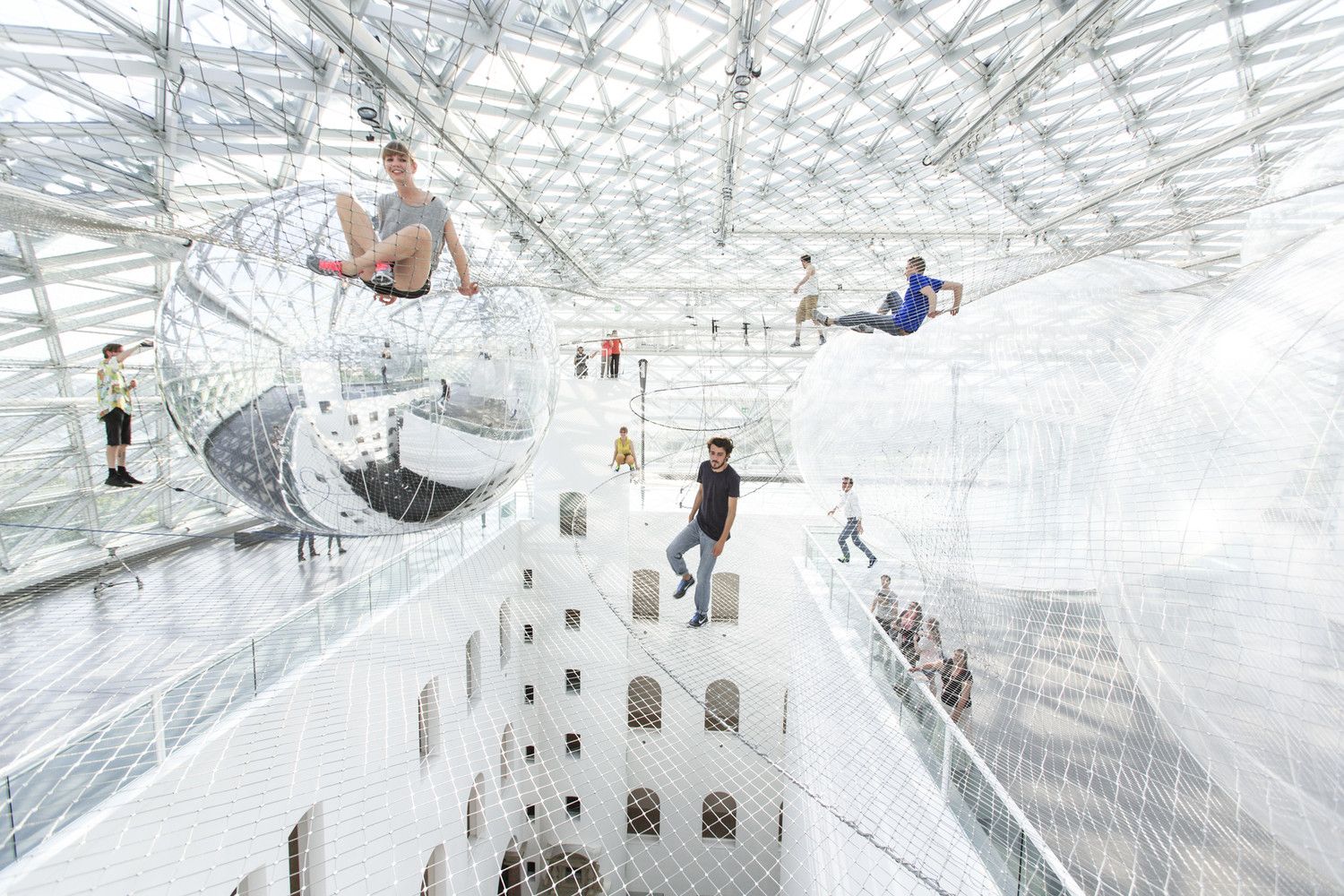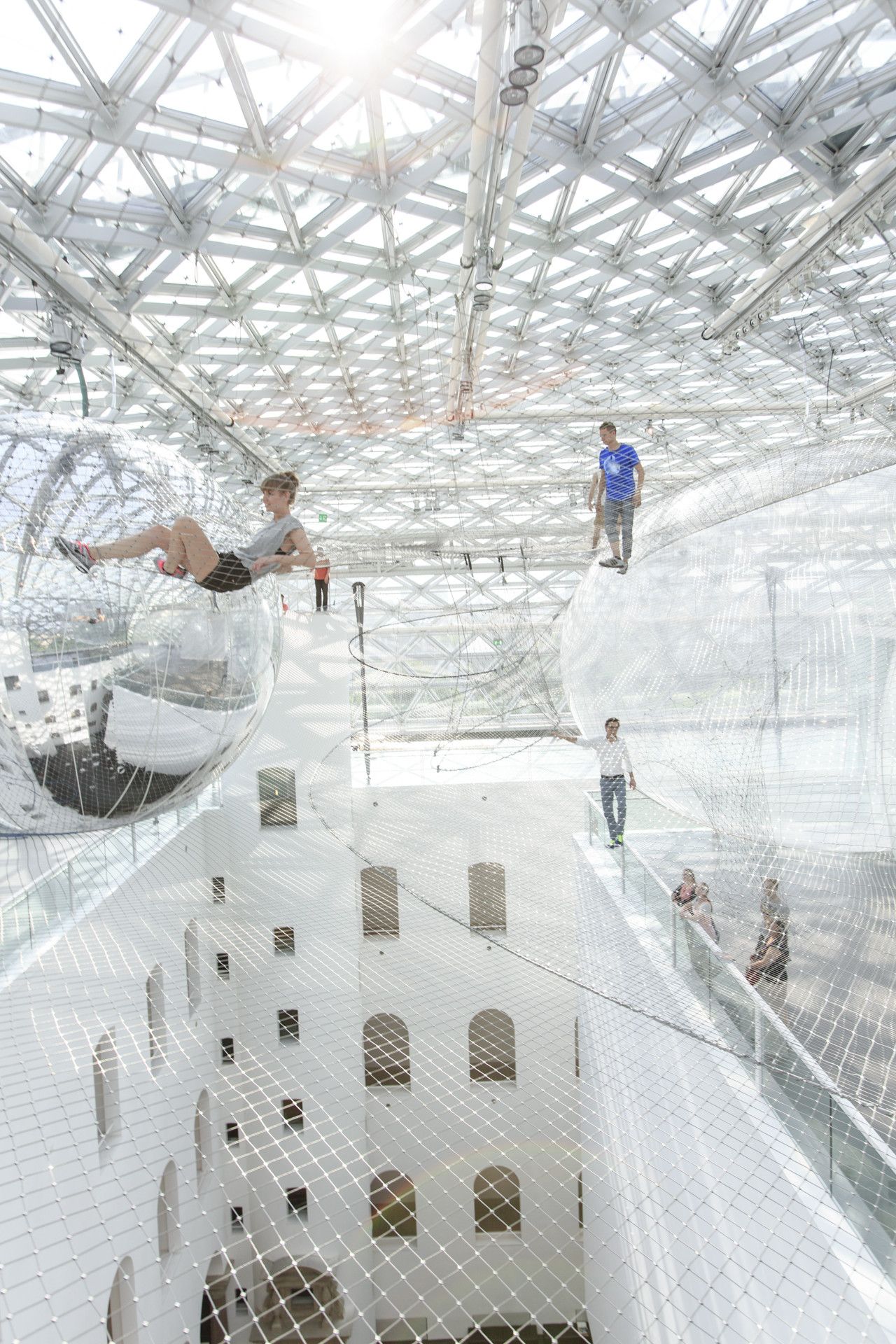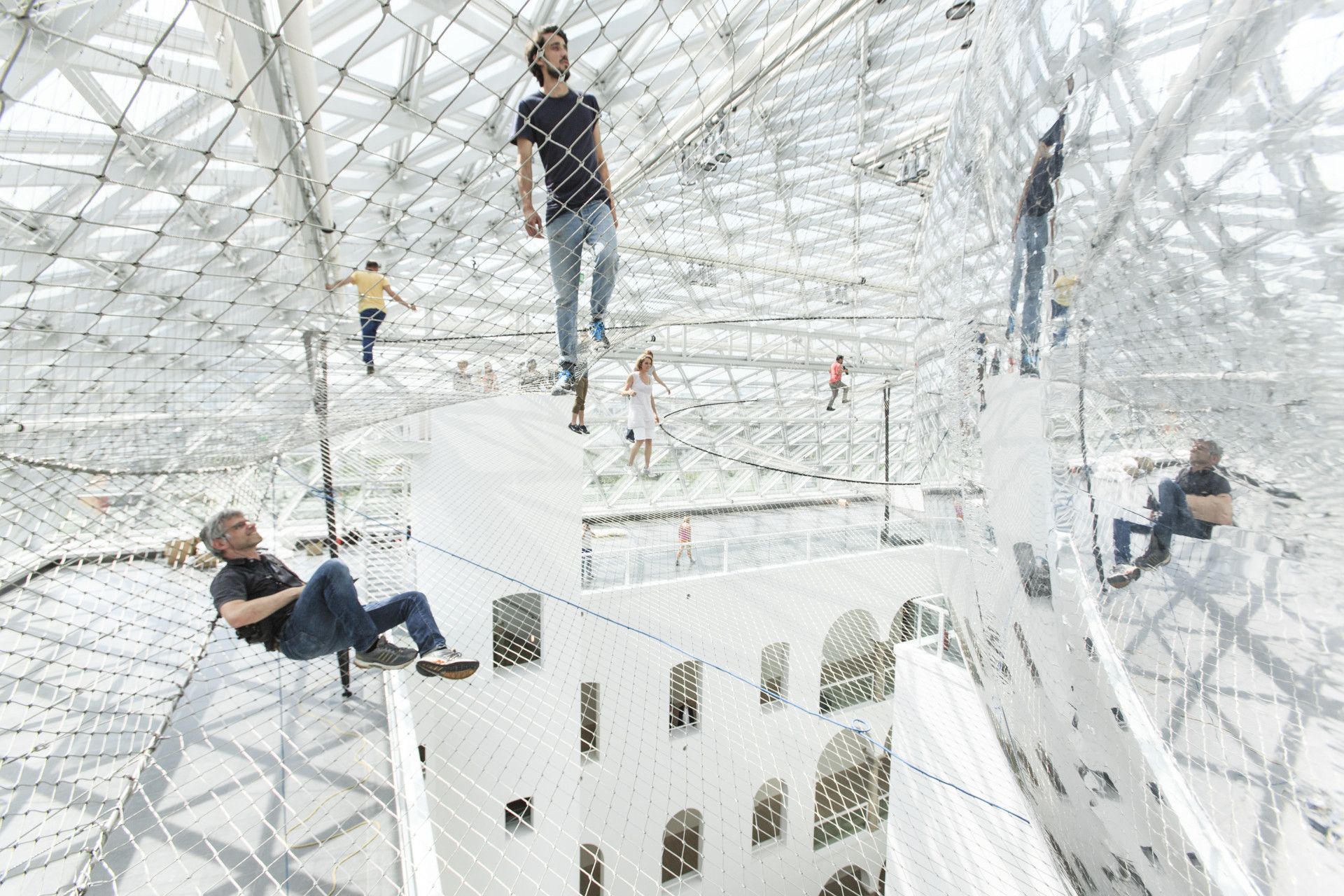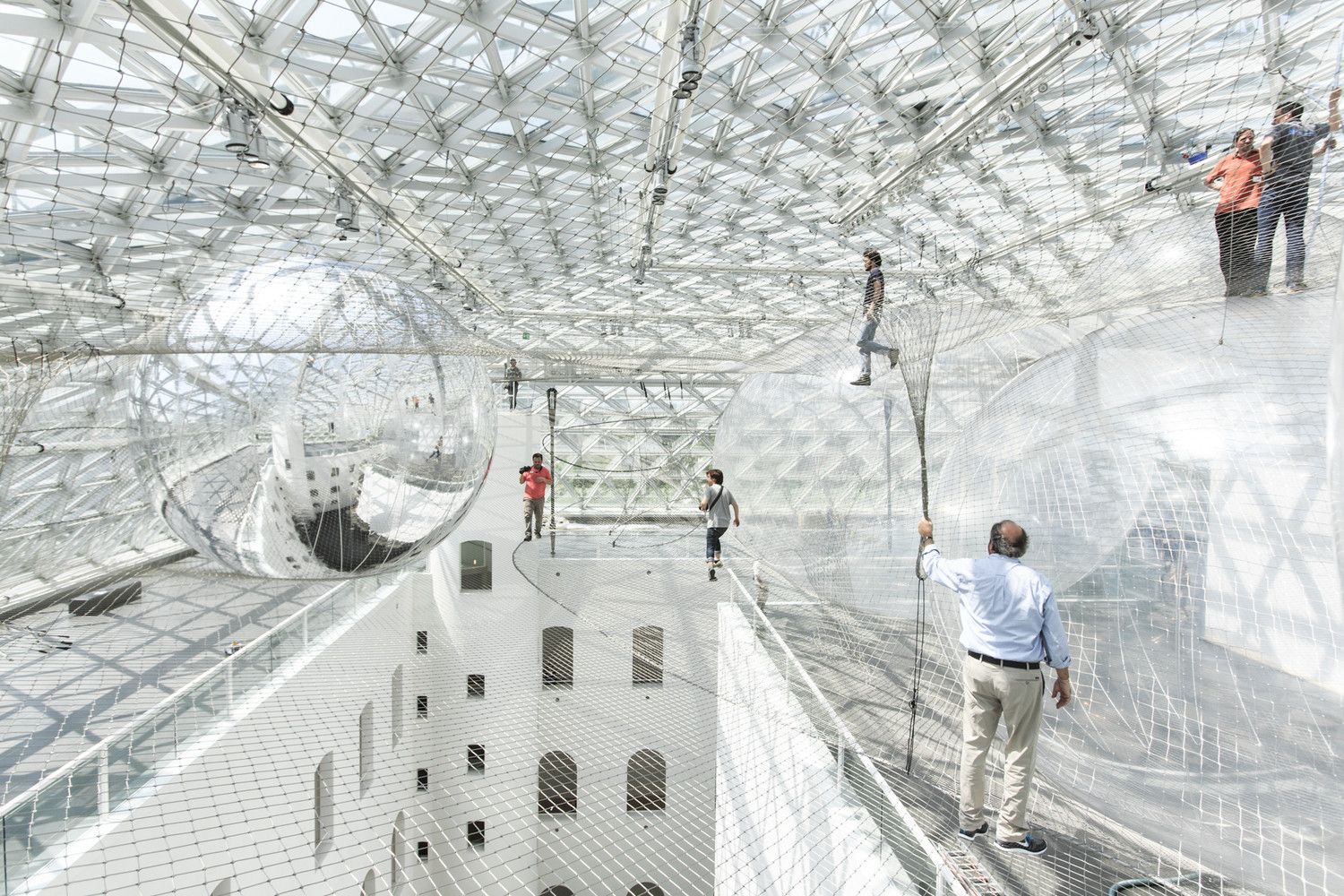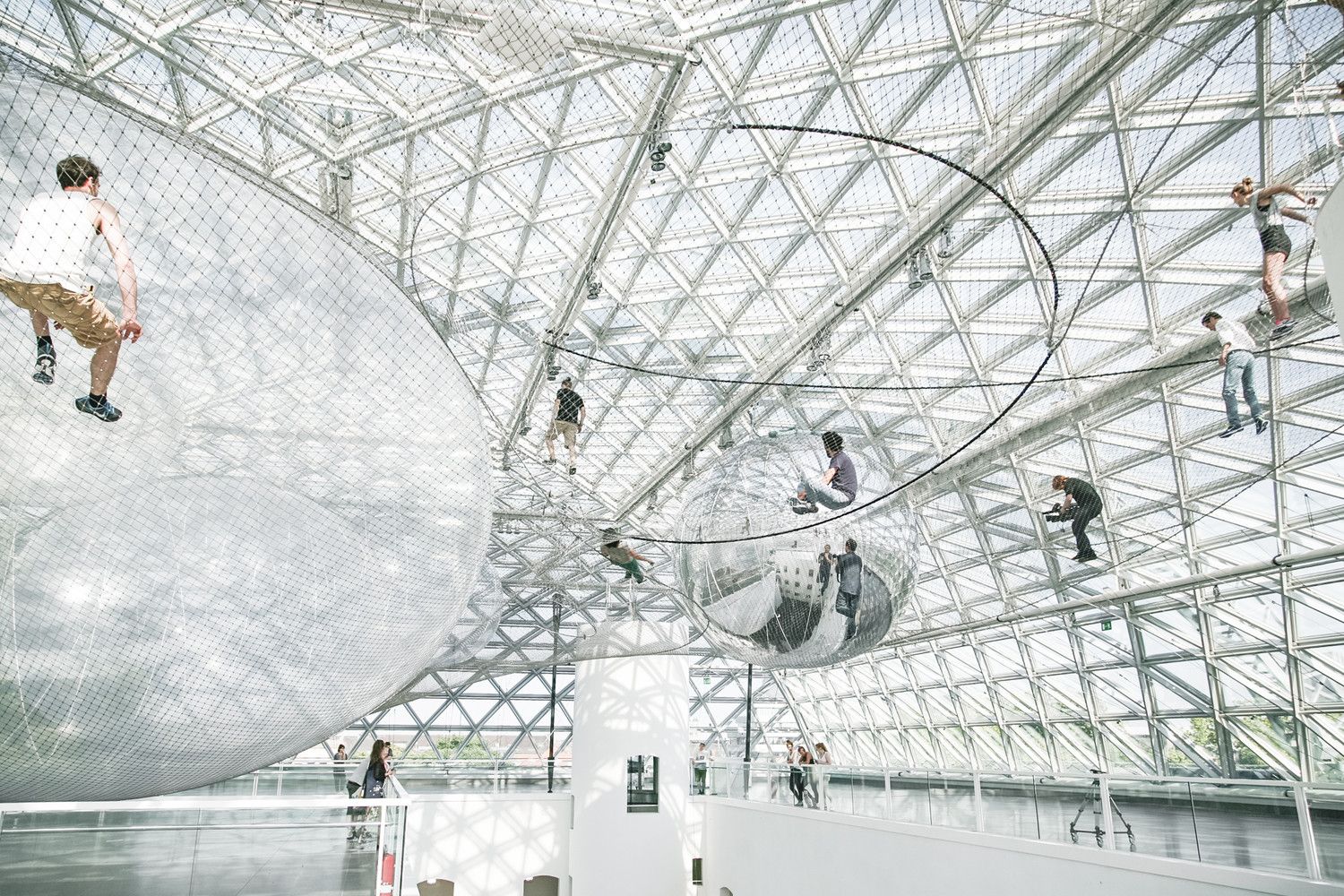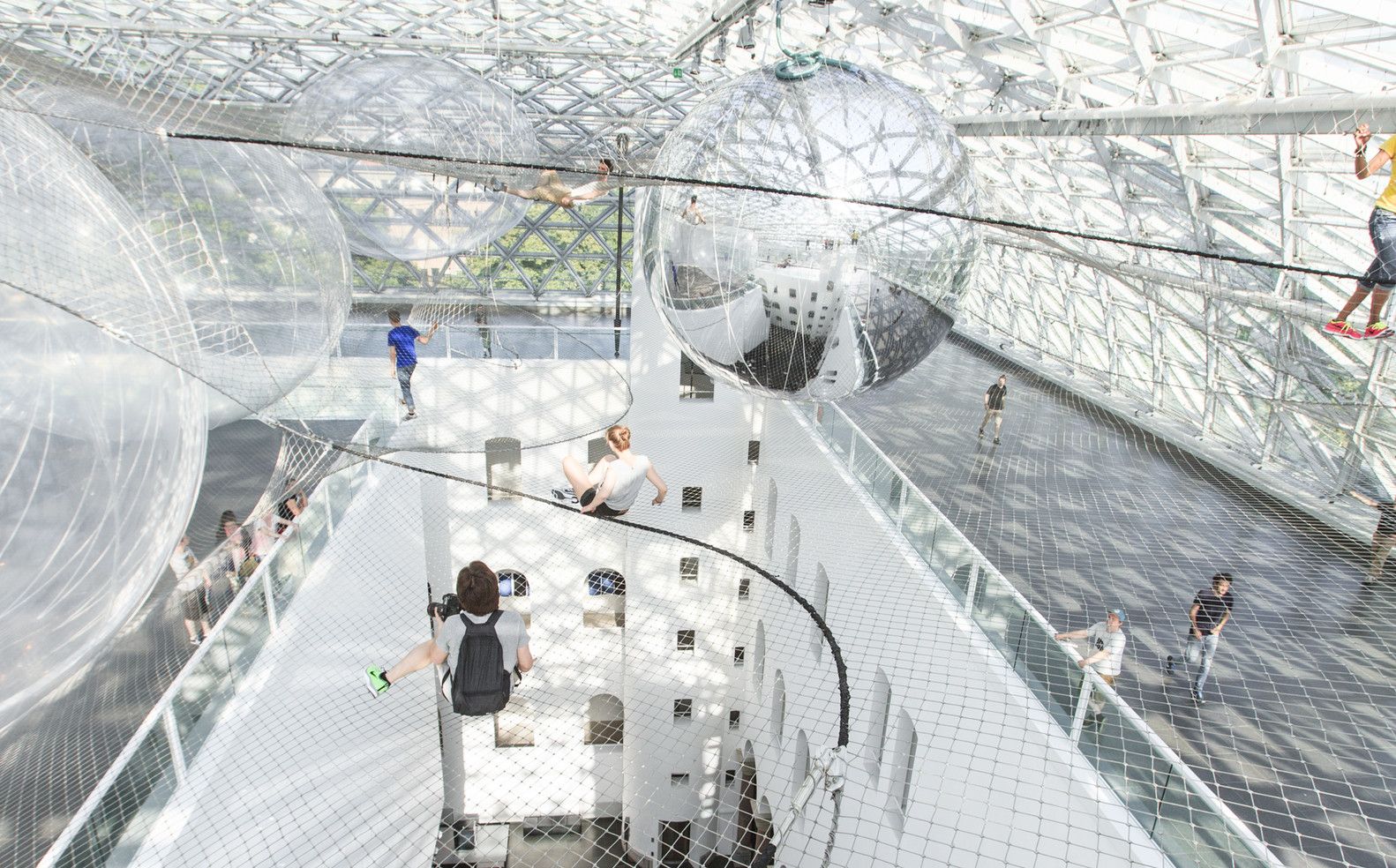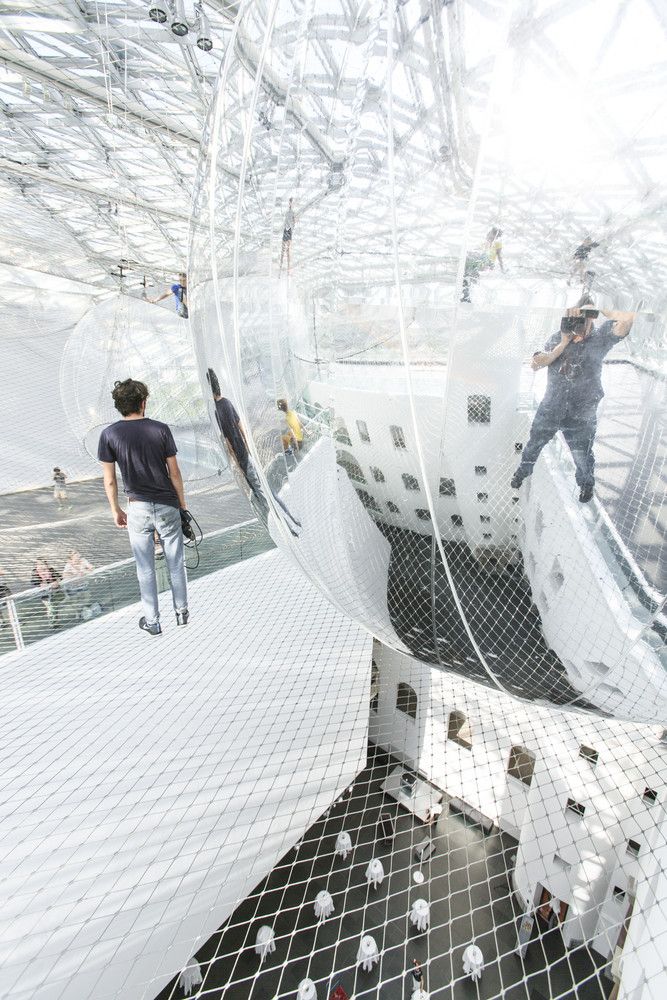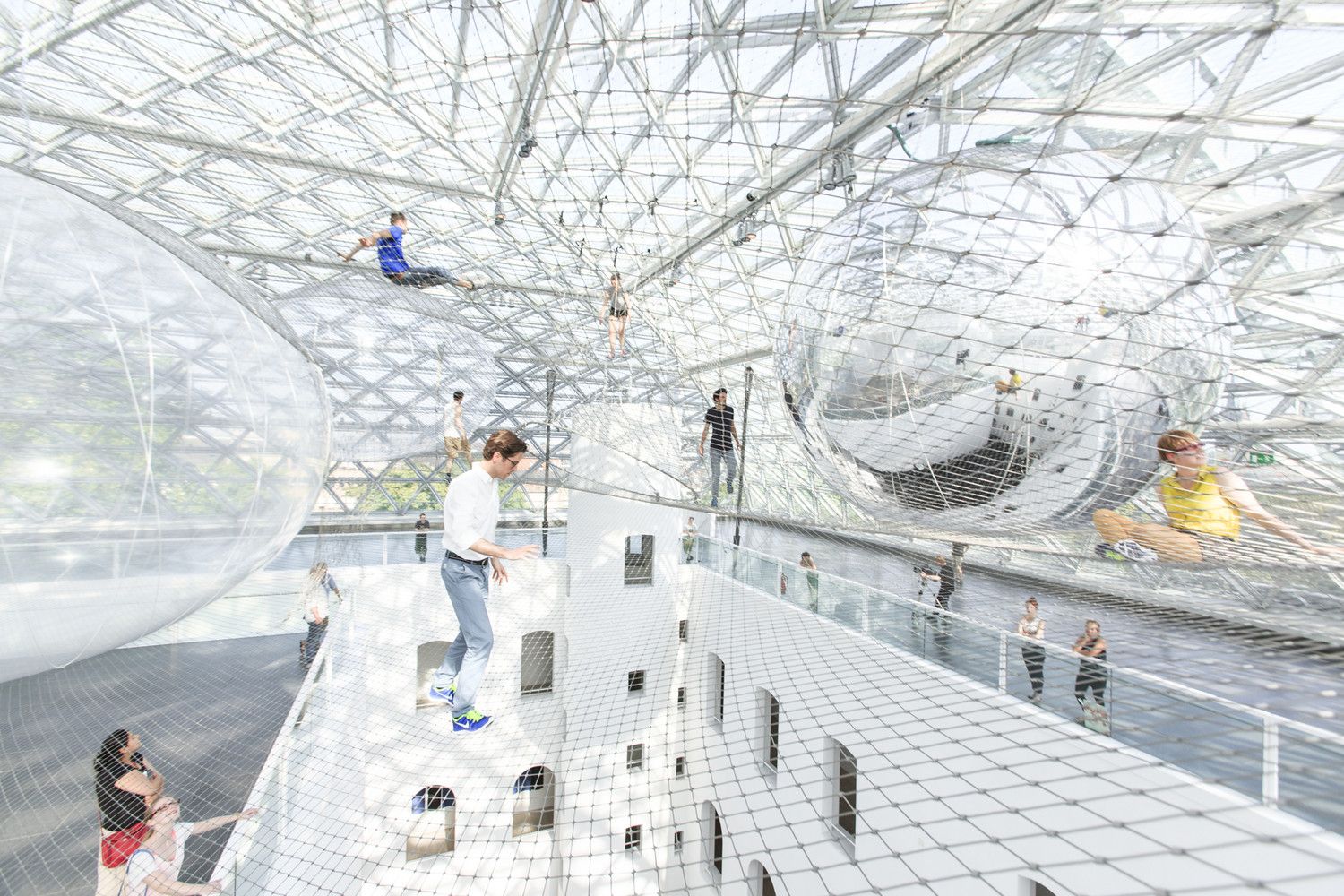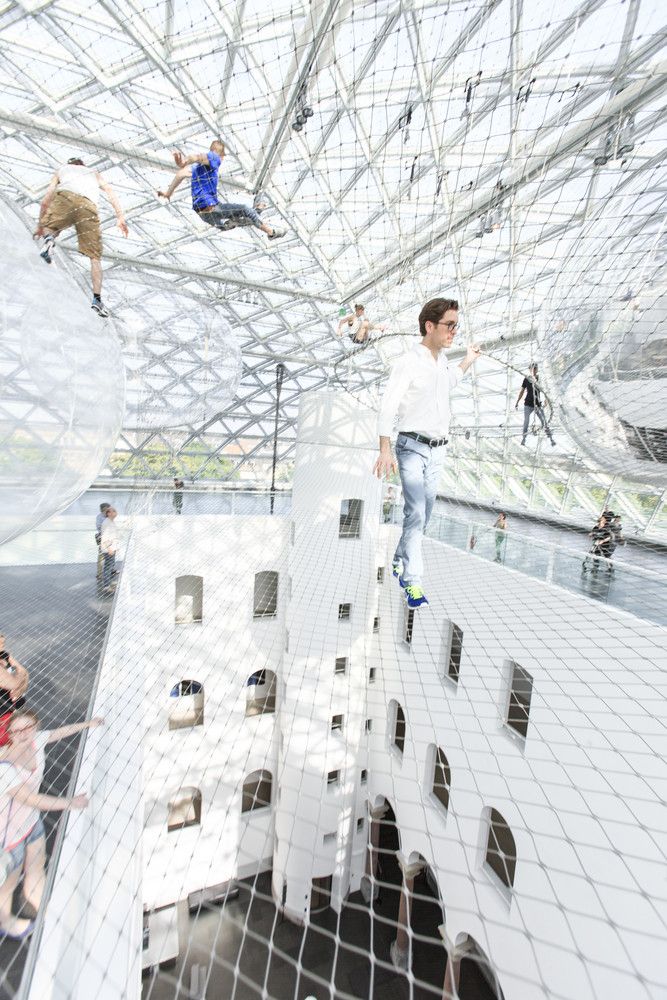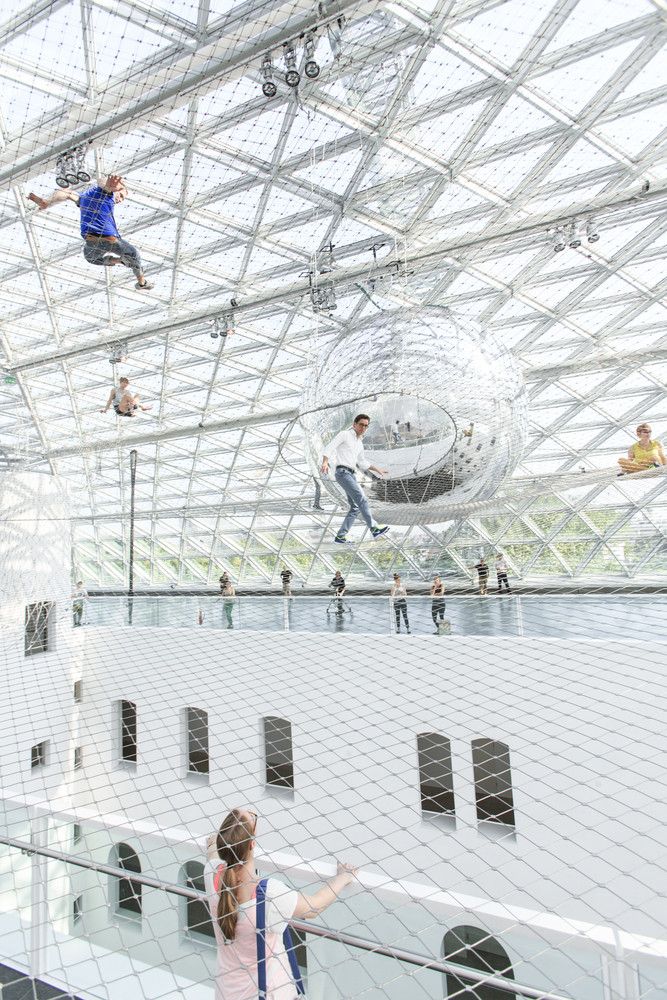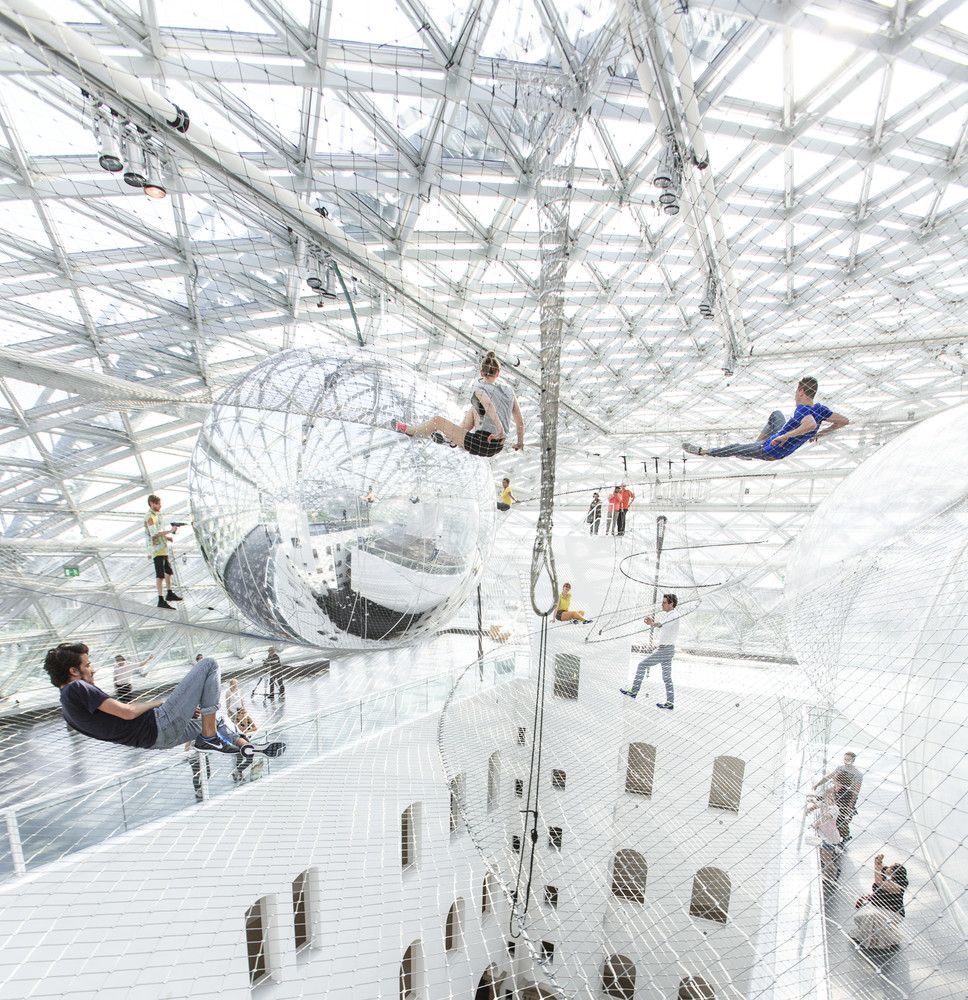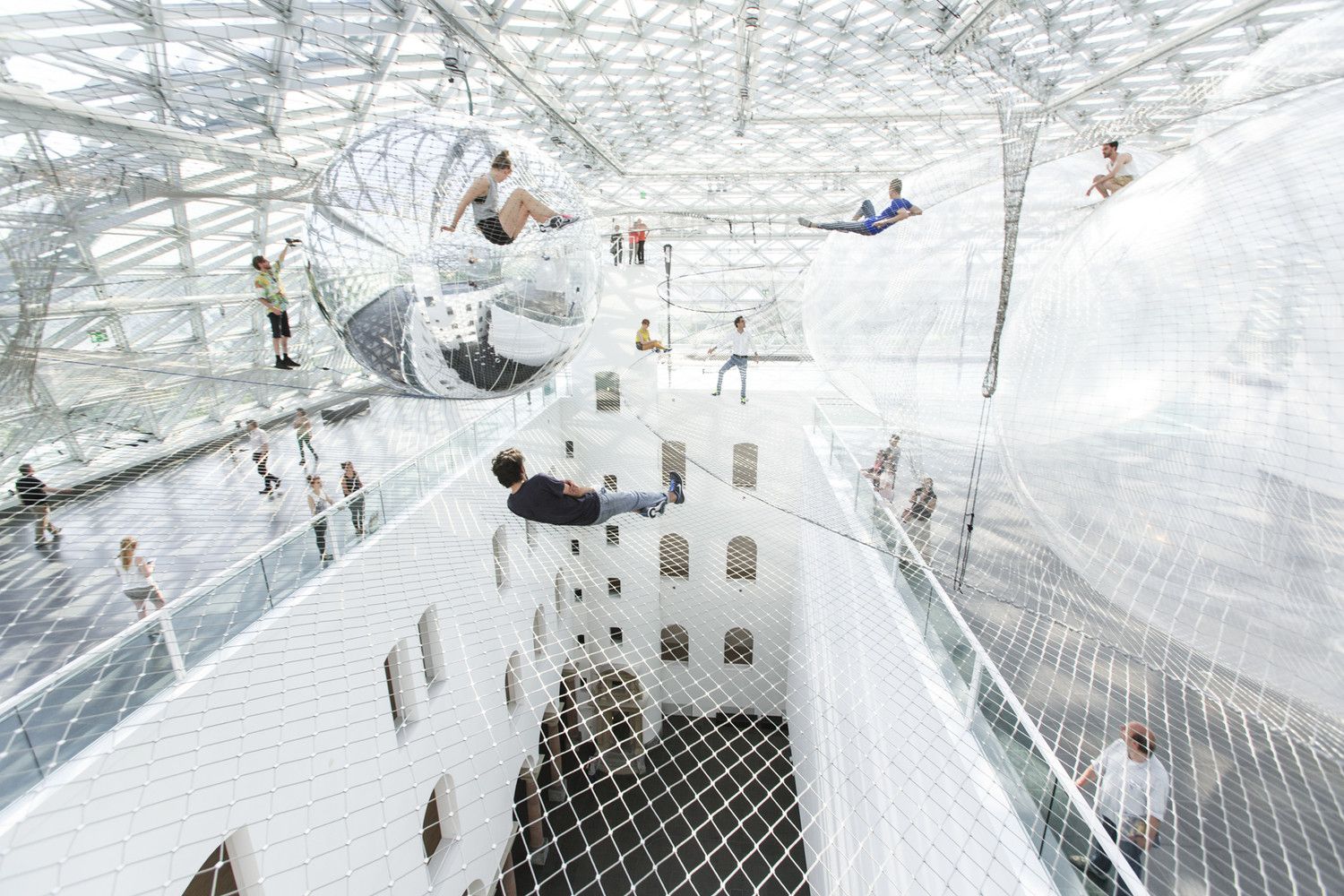The Argentinian artist Tomás Saraceno recently stated, ‘When I look at the multilayered levels of diaphanous lines and spheres, I am reminded of models of the universe that depict the forces of gravity and planetary bodies. for me, the work visualizes the space-time continuum, the three-dimensional web of a spider, the ramifications of tissue in the brain, dark matter, or the structure of the universe. with ‘in orbit,’ proportions enter into new relationships; human bodies become planets, molecules, or social black holes.’
He was describing his most recent work, the very large-scale instillation in Düsseldorf’s K21 Ständhaus. Titled ‘In Orbit’ and opening on 21 June, 2013, it covers an area of some 2500 m² at a height of 20 meters.
Yes, if the pictures didn’t clue you, the safety netting construction stretches across the museum’s vast open atrium covering the vertical space of three stories. Visitors are invited to climb within, around and between the multiple levels of ‘In Orbit’, sharing the space with large, up to 8.5 m diametre, air-filled PVC spheres.
The work raises the question of what is architecture. Is it the bounding walls and roofs we live under everyday? Or is it the embodiment of space and how we experience it? It’s indelibly a bit of both. Richard Serra’s sculptures are occupiable, but offer no bounding; ‘In Orbit’ provides bounding and occupancy, but offers no enclosure, no opacity.
The lines of what architecture is composed of have become so thin, net thin, that the differences existent are no longer important, what’s important is advancement and inspiration.
Courtesy of Tomás Saraceno
Courtesy of Tomás Saraceno
Courtesy of Tomás Saraceno
Courtesy of Tomás Saraceno
Courtesy of Tomás Saraceno
Courtesy of Tomás Saraceno
Courtesy of Tomás Saraceno
Courtesy of Tomás Saraceno
Courtesy of Tomás Saraceno
Courtesy of Tomás Saraceno
Courtesy of Tomás Saraceno
Courtesy of Tomás Saraceno
Courtesy of Tomás Saraceno
Courtesy of Tomás Saraceno


